Stepping away from the familiar tranquility of our beloved float tanks, today we’ll survey another intriguing realm of sensory exploration. Imagine a therapy that, like floatation therapy, employs silence and solitude, but rather than the gentle touch of water, uses the enveloping cloak of total darkness to create a deeply introspective journey. A therapy that, instead of lasting 60-90 minutes like a typical float session, lasts for 3-7 days or more. Intrigued? Welcome to the immersive world of Darkness Therapy!
Helping to guide us through this intriguing world is Dr. Marek Maluš, an expert in Darkness Therapy doing his work and research out of the Czech Republic. Marek shared the history of Darkness Therapy, along with some of his insights and experimental results, in his 2015 Float Conference talk, and returned again for another conference talk in 2021 to elaborate and update us on his findings. Let’s step out of the light for a moment and immerse ourselves in the soothing realm of the unseen as we explore the genesis, evolution, and surprising benefits of Darkness Therapy.
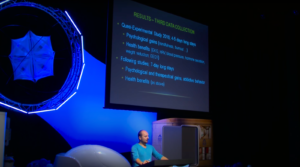
Lights Out: The History of Darkness Therapy
Darkness has always held a certain mystery. Long before the advent of scientific understanding or the idea of “Darkness Therapy”, spending time in darkness or seclusion was not an uncommon practice. In many ancient cultures, spending time in complete darkness was seen as a spiritual journey, a voyage inward.
Indian yogic traditions speak of darkness meditation, while some Buddhist monks have retreated into pitch-black caves for enlightenment. Ancient Egyptians recognized the power of darkness, seeming to make use of it in many of their mystical practices, as did certain Native American tribes.
Just as modern floatation therapy taps into sensory deprivation to awaken the mind’s potential, these historic practices recognized that darkness had the power to reset, refresh, and renew the mind.
Darkness Therapy: From Caves to Chambers
Fast forward to the 1950s, where the roots of modern Darkness Therapy can be traced back to a practice known as REST or Restricted Environmental Stimulation Therapy. Before official research was ever published on Floatation Therapy (also known in the early days as Floatation REST / Wet REST), researchers were running experiments on reducing as much sensory input as possible in a regular room with a bed, developing what would come to be known as dry REST (or chamber REST).
Separate from this, but even more closely related to current Darkness Therapy, in the 1960s, the anthropologist Holger Kalweit introduced Dunkeltherapie (literally “Dark Therapy”) to Germany after taking part in a Tibetan tradition involving a 7 week long stay in a dark chamber. This can be considered the beginning of modern Darkness Therapy.
From here we continue our journey in the Czech Republic, where in 2006 the first Darkness Therapy chambers were introduced, and where it continues to thrive. In these, participants would spend between 3-7 days (or sometimes longer) in total darkness. By 2015, there were 15 providers of Darkness Therapy in the Czech Republic with between 1-3 chambers each, along with a few more in the neighboring country of Slovakia.
Shedding Light on Darkness
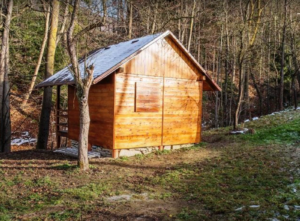
Let’s explore what these darkness retreats look like, and how they function. In his presentations, Dr. Maluš introduces two types of darkness therapy facilities, referred to as Type I and Type II, and all of these images belong to Dr. Maluš, from his presentations.
Type I facilities are larger and more comprehensive, often operated under medical supervision. These facilities offer a comfortable environment with amenities such as a shower, air conditioning, a bed, and even exercise devices. The highlight of this type is the provision of daily psychological sessions in complete darkness – a guide therapist comes to check in guests once a day, reviewing your needs and providing psychological assistance. It’s a full-service experience, giving the participant both the environment and professional support to navigate their journey in the dark.
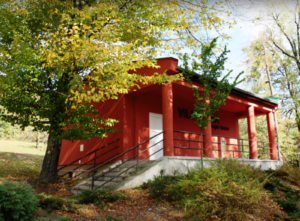
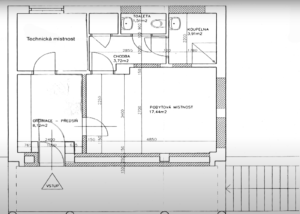
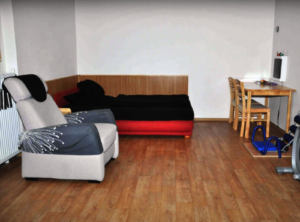
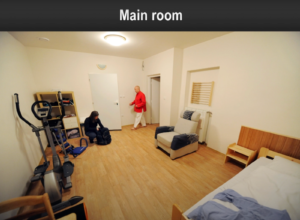
Type II facilities are simpler, more commonplace facilities and can often be found in more remote, rural locations. They offer a simpler setup compared to Type I, but still contain all the necessary amenities such as a toilet, shower, sink, and even a bidet for added convenience. You might have a CD or MP3 player for audio entertainment, but for Marek’s studies, these are usually not permitted. Fresh fruits and food are delivered daily, and even during the deliveries the total darkness is maintained.
Staying at one of these is a little bit like a space mission, but you stay right here on Earth, taking a deep, restorative plunge into your own mind.
What’s Next? More Research, More Understanding
There is very little official research done into Darkness Therapy (as opposed to floatation therapy, or even chamber REST). Dr. Marek Maluš shared results from several surveys and informal studies conducted in the last decade in the Czech Republic, all of which showed great promise. Despite its intriguing premise, historical significance, and strong praise from customers, Darkness Therapy has yet to gain funding for research on the same scale that floatation therapy has (which is still on a much, much smaller scale than, for example, pharmaceutical studies).
It has yet to enter popular culture in the same way, and it’s also not nearly as widely accessible as floatation therapy yet. This is in no small part due to both the complexity of setting up the right environment and the unique and long-term commitment it requires from the participants.
Floating and Darkness Therapy: Cousins in Darkness
We hope this peek into the world of darkness therapy has piqued your curiosity! While we might not have Darkness Therapy available at our center yet, we’re dedicated to providing you with the best darkness you can possibly find in our very own float tanks.
And let us know if you ever want to float longer than our standard sessions. Three or four hours isn’t quite the same as seven days in a chamber, but who knows? You might discover a whole new layer to your float practice.
Until next time, keep floating, keep exploring, and remember – whether in the stillness of a float tank, the quiet of a darkness chamber, or just lying in your bed at night – great things often come from taking a moment to rest, reset, and just breathe.



Recent Comments